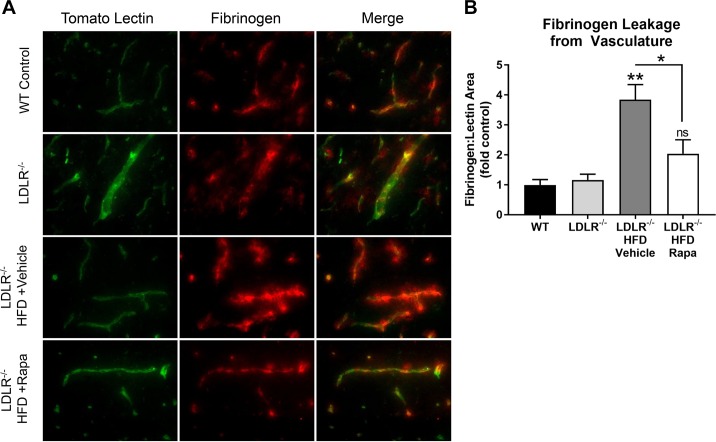Fig. 2.
Mammalian/mechanistic target of rapamycin (mTOR) inhibition attenuates blood-brain barrier (BBB) breakdown in high-fat diet (HFD)-fed low-density lipoprotein receptor-null (LDLR−/−) mice modeling atherosclerosis and vascular cognitive impairment. A: representative double-immunofluorescence microscopy images of cortical vasculature (illuminated with tomato lectin and fibrinogen, a BBB-impermeable serum protein) from wild-type (WT) and LDLR−/− mouse brains. Rapa, rapamycin. Magnification: ×40. B: quantitative analyses of fibrinogen extravasation, measured as increased fibrinogen-positive area relative to tomato lectin-positive area. Results were normalized to WT controls. **Different from WT and LDLR−/− by Tukey’s multiple-comparison post hoc test [q(15) > 6.14, P < 0.003 for both comparisons]. ns, Not significant. *Significant difference between LDLR−/− + HFD + vehicle (Veh) and LDLR−/− + HFD + rapamycin by Tukey’s multiple-comparison post hoc test [q(15) = 4.55, P = 0.03]. Post hoc tests were applied to a significant omnibus ANOVA [F(3,15) = 10.12, P = 0.0007]. Values are means ± SE; n = 4–6 mice/group.

